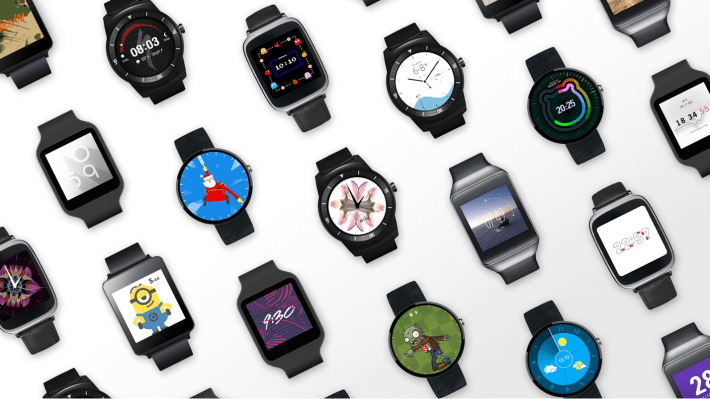On the cusp of the annual plunge into the CES-pool, where a gigantic cocktail shaker of consumer electronics companies will spray forth what will mostly turn out to be forlorn hopes for growth, it’s customary to shake one’s head at the sorry, self-obsessed state of tech.
But there is perhaps increased cause for eye-rolling this year, with the prospect of a thousand and one wearable permutations plopping off the end of factory lines — propelled into being by their makers’ frantic search for the mass market.
Late last year analyst Gartner claimed smart clothing is going to emerge this year. Or rather that it has the “greatest potential for growth” among fitness wearables. Which is not saying much when you’re rounding up an already over-egged category to separate out a few relatively late-to-the-party sprinkles.
Novelty running t-shirts that track the salt ratio of your sweat glands as you slog around the block might grab some attention for a while but when questionable utility comes unstuck in the wash, well, they’re going to be consigned to the techno laundry bin until something more robustly useful comes along. So the hype cycle goes.
Of course device makers have fresh impetus to rush out wearables in 2015 to try to gobble a little of the oxygen of publicity that will inevitably be pumped into Apple’s own inflated wrist computer, due early this year. Which is never a good formula for making useful gadgets. But it is a good formula for gadgets to be made. And so CES will be lousy with wearables.
The usefulness of the Apple Watch itself remains to be seen. In the short-term it won’t be an also-ran, because #Apple and #fashion provide some innate (but perhaps limited) cachet. But nor will it be a game changer in the way the first iPhone was. The watch is necessarily evolution, not revolution because the kingpin mobile gadget — smartphones — are a fantastically useful, highly capable, super successful technology in their own right. And they are also a device we already own.
Any other mobile hardware has to contend with and compete with that. Which means everything else is a supplementary, secondary device. And any ‘digital life enhancements’ offered by wearables are necessarily incremental. Or, put another way, they’re a bit meh. (Indeed, ‘mehrables’ might be more appropriate category name. How much wear the average wearable actually gets is a metric I for one would love to quantify.)
Meanwhile the tablet category — which Apple’s iPad sparked back into life less than five years ago — is on track for more slow growth this year (says Gartner). Why? Because phones have grown bigger and more tablet-like, eroding the usefulness of tablets. If anything is growing here, it’s shiny new gadget fatigue. Because the mobile computers stuffed in our back pockets are already so darn useful. And only getting more so, as more sensing capabilities are added year on year. So why strap on anything else?
Consumer technology’s auxiliary ‘cutting edge’ (wearables et al) was already pushing past the neurotic last year — what with overblown quantification hype demanding shrilly that everyone and their dog track all of the movements of all of the things. There was even a device for tracking your cat’s bowel movements. And, frankly, if you don’t know where your kids are without clipping them to a gizmo you probably shouldn’t have any in the first place.
How much appetite there is for obsessive quantification and tracking is questionable. Certainly at this point in tech evolution, when the quality of the data being generated is questionable, and what you can do with it is so roundly uninspiring. Use cases are often not compelling, and are compounded by dismal user experience. If your quantification ‘service’ just spews out another funnel of data on the expectation that a daily digital gunging will be a welcome addition to the harried consumer’s life, newsflash, it won’t. You’re just adding to the noise pollution.
The mass market will certainly care when technology enables it to track its own healthcare in accurate, granular detail — say, at a molecular level — and, crucially, when devices and services use that intel intelligently, to signpost how the user’s lifestyle can be tweaked for positive, quantifiable health results. (Emphasis on the word accurate.)
But until then wearables are mostly an annoying bandaid that’s all too often coming unstuck. Like a version of Clippy the digital paperclip that’s stepped out of the screen and wrapped itself cloyingly around your wrist, these devices see you are moving your meatsack and want to tell you all about it.
And if they’re not going after this sort of ‘general movement nagging’, wearable makers have the tougher job of identifying and serving particular niche groups who might be persuaded to shell out for a specialist wristlet. There’s utility there, sure, but smaller more specialist markets do not add up to another smartphone-sized consumer electronics success story. Sorry CES.
So, on the cusp of a fresh wave of wearables spontaneously manifesting in the Mojave desert, a plea for tech to stop being so hysterical — and focus on the business of being genuinely useful. However long that takes. This one’s a marathon, not a sprint.
